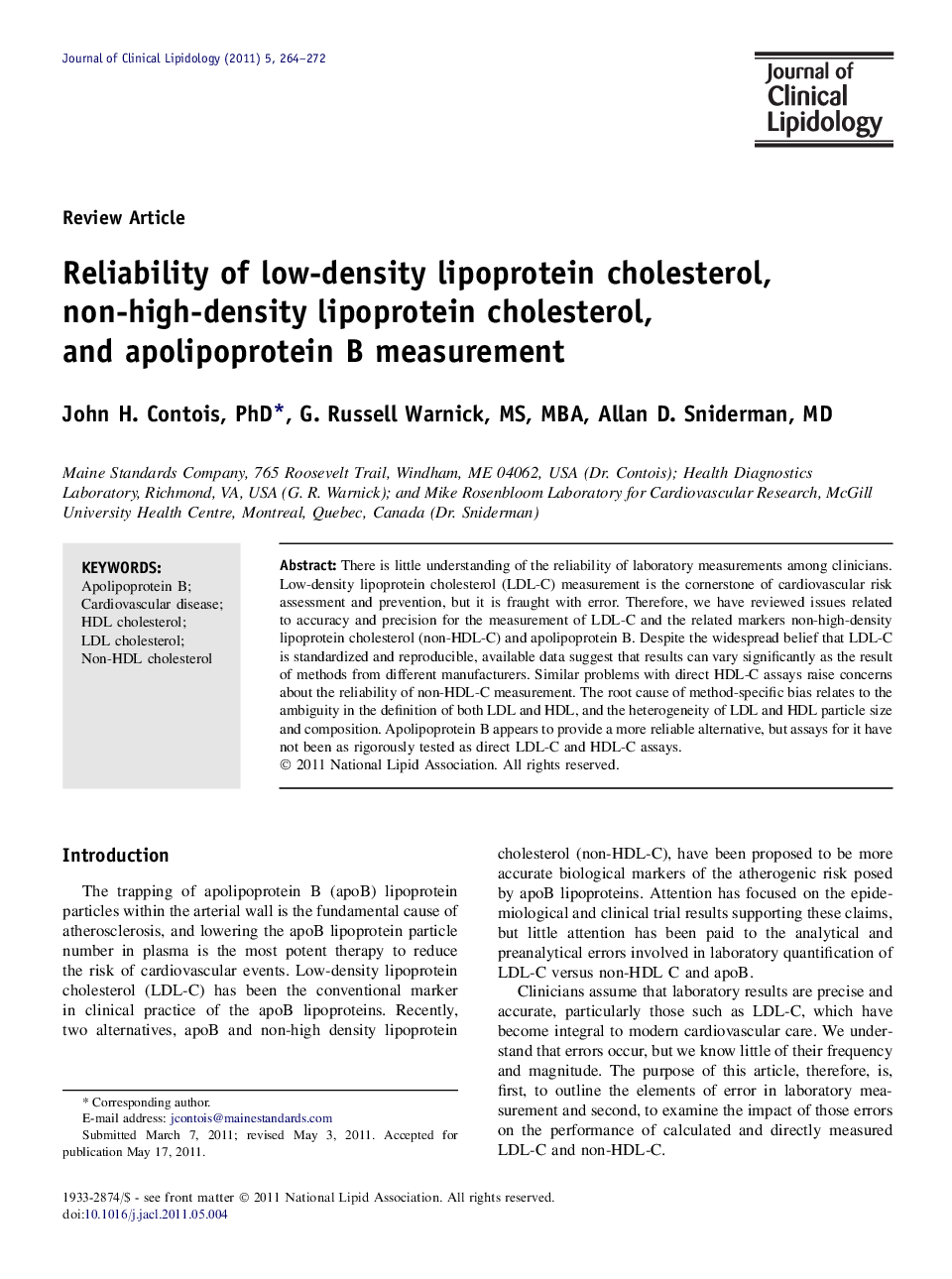| Article ID | Journal | Published Year | Pages | File Type |
|---|---|---|---|---|
| 2966292 | Journal of Clinical Lipidology | 2011 | 9 Pages |
There is little understanding of the reliability of laboratory measurements among clinicians. Low-density lipoprotein cholesterol (LDL-C) measurement is the cornerstone of cardiovascular risk assessment and prevention, but it is fraught with error. Therefore, we have reviewed issues related to accuracy and precision for the measurement of LDL-C and the related markers non-high-density lipoprotein cholesterol (non-HDL-C) and apolipoprotein B. Despite the widespread belief that LDL-C is standardized and reproducible, available data suggest that results can vary significantly as the result of methods from different manufacturers. Similar problems with direct HDL-C assays raise concerns about the reliability of non-HDL-C measurement. The root cause of method-specific bias relates to the ambiguity in the definition of both LDL and HDL, and the heterogeneity of LDL and HDL particle size and composition. Apolipoprotein B appears to provide a more reliable alternative, but assays for it have not been as rigorously tested as direct LDL-C and HDL-C assays.
